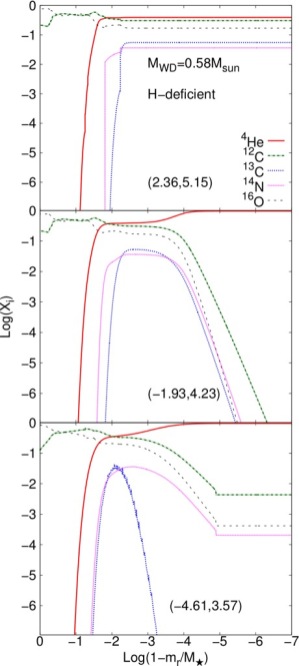http://arxiv.org/abs/1703.05624
R Aqr is a symbiotic binary system consisting of a mira variable, a hot companion with a spectacular jet outflow, and an extended emission line nebula. We have used R Aqr as test target for the visual camera subsystem ZIMPOL, which is part of the new extreme adaptive optics (AO) instrument SPHERE at the Very Large Telescope (VLT).
We compare our observations with data from the Hubble Space Telescope (HST) and illustrate the complementarity of the two instruments. We determine from the Halpha emission the position, size, geometric structure, and line fluxes of the jet source and the clouds in the innermost region (<2″) of R Aqr and determine Halpha emissivities mean density, mass, recombination time scale, and other cloud parameters.
Our data resolve for the first time the R Aqr binary and we measure for the jet source a relative position 46+/-1 mas West of the mira. The central jet source is the strongest Halpha component. North east and south west from the central source there are many clouds with very diverse structures. We see in the SW a string of bright clouds arranged in a zig-zag pattern and, further out, more extended bubbles. In the N and NE we see a bright, very elongated filamentary structure and faint perpendicular “wisps” further out. Some jet clouds are also detected in the ZIMPOL [OI] and He I filters, as well as in the HST line filters for Halpha, [OIII], [NII], and [OI]. We determine jet cloud parameters and find a very well defined anti-correlation between cloud density and distance to the central binary. Future Halpha observations will provide the orientation of the orbital plane of the binary and allow detailed hydrodynamical investigations of this jet outflow and its interaction with the wind of the red giant companion.
Read this paper on arXiv…
H. Schmid, A. Bazzon, J. Milli, et. al.
Fri, 17 Mar 17
6/50
Comments: 24 pages, 14 figures (accepted for publication in Astronomy and Astrophysics)





































































































































